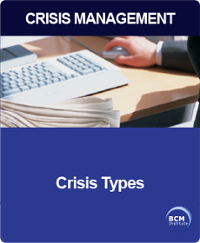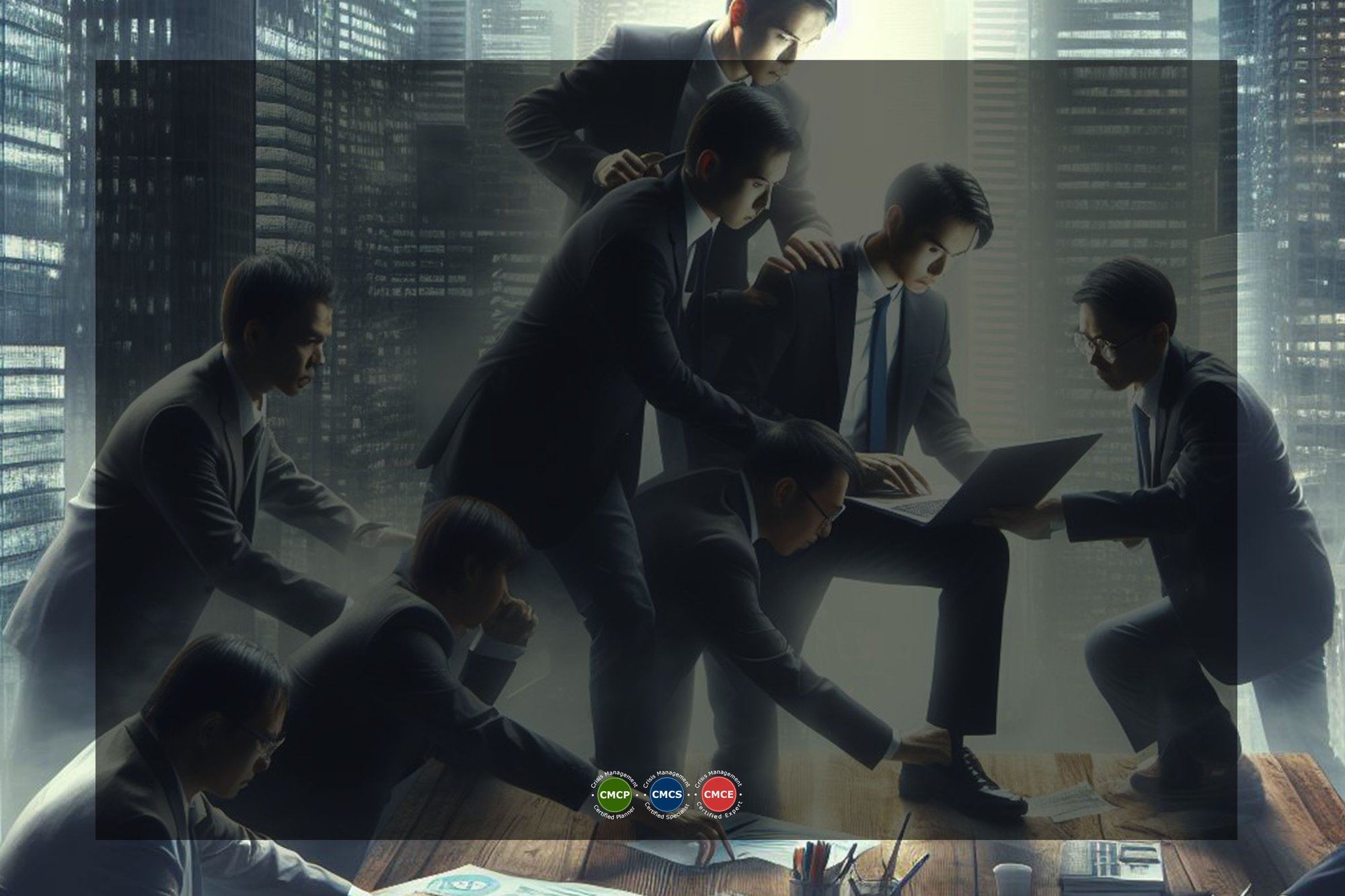Crisis Scenario Resulting from Technological Threat
Introduction
In today's digital age, technology is at the core of nearly every organisational function—from customer service and transaction processing to data analytics and internal communication.
A technological crisis occurs when this foundational layer fails unexpectedly, disrupting business continuity and stakeholder trust.
These disruptions can result from internal system errors, failed upgrades, third-party outages, or compatibility issues between platforms. The high dependency on technology also means that even minor failures can escalate rapidly into full-blown crises.
Organisations across all sectors must be aware that technological failure is not just an IT issue—it is a business issue.
As operations become increasingly digitised and automated, the risk exposure to system malfunctions, integration breakdowns, and infrastructure failures grows.
The following table outlines key examples of technological crisis scenarios, providing a practical reference to help organisations identify potential vulnerabilities, develop risk controls, and prepare response strategies that ensure continued service delivery.
A technological threat arises from a failure in technology. Any disruptions or problems in the overall systems will lead to a technological crisis.
Definition: Technological Crisis Scenario
A Technological Crisis Scenario refers to any disruption or failure arising from the malfunction, breakdown, or unavailability of technology systems, infrastructure, or tools critical to an organisation’s operations.
These crises can be triggered by hardware failure, software bugs, cyber incidents, outdated legacy systems, poor system integration, or issues with third-party providers (e.g., cloud services).
Technological crises can lead to operational downtime, data loss, compliance breaches, reputational damage, and financial losses.
Technological Crisis
 A technological threat is one of the significant types of crises or crisis scenarios caused by the human application of science and technology.
A technological threat is one of the significant types of crises or crisis scenarios caused by the human application of science and technology.
Technological accidents inevitably occur when technology becomes complex and coupled, and something goes wrong in the system as a whole (Technological breakdowns).
Disruption to the Organisation's IT System
This type of crisis is often directly related to the breakdown of IT systems. In this case, the situation is handled through the provision of an IT disaster recovery (DR) plan.
Technological Breakdowns
Loss of Operating Vessel
In recent years, events such as hazardous substance spills, software failures, industrial accidents, oil spills, machine breakdowns, and corrupted software have given rise to technological crises. Actual examples include the Chernobyl disaster and the Exxon Valdez oil spill.

If your organisation operates vessels, such as a ferry or an aircraft, and they fail, this can be classified as a Technological Breakdown.
Some technological crises occur when a human error causes disruptions (Human breakdowns).
People tend to assign blame for technological disasters because technology is often subject to human manipulation, whereas they do not typically hold anyone responsible for natural disasters.
The crisis is categorised as mega damage when an accident creates significant environmental damage and is classified as a technological failure.
This is a detailed list of examples for the crisis scenario: Technological, which involves the failure, disruption, or breakdown of critical technologies, whether due to system errors, hardware or software failure, poor integration, or external technical factors. These crises can have a severe impact on operations, data integrity, customer service, and compliance.
Example of Crisis Scenario: Technological
| No. | Example | Description |
|---|---|---|
| 1 | Core System Outage | The central IT system or application (e.g., banking platform, ERP, CRM) becomes unavailable due to failure or overload, halting operations. |
| 2 | Data Centre Failure | A critical data centre suffers a power outage, cooling failure, or hardware malfunction, affecting hosted systems and services. |
| 3 | Software Upgrade Gone Wrong | A newly deployed software update causes compatibility issues, data corruption, or system crashes. |
| 4 | Cloud Service Disruption | A third-party cloud provider experiences downtime or latency issues, disrupting hosted applications or data access. |
| 5 | Network Failure or Internet Outage | Loss of internal or external network connectivity can cause disruptions to business processes across branches or sites. |
| 6 | Malfunction of Self-Service Channels | ATMs, mobile apps, kiosks, or web portals experience glitches or shutdowns, which can affect customer transactions. |
| 7 | System Integration Breakdown | Newly integrated systems (e.g., APIs, middleware) often fail to synchronise properly, resulting in transaction errors or service unavailability. |
| 8 | Corrupted or Lost Data | Critical business or customer data becomes inaccessible or is accidentally deleted, requiring recovery or rollback. |
| 9 | Automated Process Failure | Robotic process automation (RPA) tools or scripts malfunction, disrupting workflow execution or approvals. |
| 10 | Time-Sensitive System Failure | Failures occur in time-critical systems (e.g., trading platforms, airline scheduling), resulting in revenue or operational losses. |
| 11 | Mobile App Crash Post-Deployment | A significant app update results in crashes, login issues, or loss of functionality for thousands of users. |
| 12 | Bug in Billing or Payment Engine | A software bug can result in incorrect billing, duplicate charges, or payment failures affecting multiple customers. |
| 13 | Failure of Surveillance or Security Systems | A technical fault in access controls, CCTV, or alarms leaves the physical infrastructure vulnerable to intrusion. |
| 14 | Outdated Legacy System Collapse | A mission-critical but obsolete system fails due to a lack of maintenance or hardware limitations. |
| 15 | Technology Dependency on a Single Vendor | Sole reliance on a single vendor leads to an operational standstill when that vendor experiences issues or withdraws its support. |
Technological crises are no longer rare or isolated events—they are recurring risks that demand ongoing preparedness.
Whether it’s a failed software deployment, a system outage, or a data centre malfunction, the consequences of technical failure can be widespread and immediate.
In some cases, technology-related issues may also trigger secondary risks such as customer dissatisfaction, regulatory scrutiny, or cyber vulnerabilities.
To navigate technological crises effectively, organisations must adopt a proactive approach that includes robust IT governance, regular system testing, reliable backup solutions, and cross-functional business continuity planning.
Investing in resilience means going beyond reactive troubleshooting—it requires anticipating failure points, strengthening infrastructure, and fostering a technology culture that values stability, security, and adaptability.
By learning from common crisis scenarios, organisations can better protect their digital ecosystem and maintain operational continuity in an increasingly technology-reliant world.
More Information About Crisis Management Blended/ Hybrid Learning Course
To learn more about the course and schedule, click the buttons below for the CM-300 Crisis Management Implementer [CM-3] and the CM-5000 Crisis Management Expert Implementer [CM-5].







![[BL-CM] [5] Register](https://no-cache.hubspot.com/cta/default/3893111/82024308-16f4-4491-98be-818a882c6286.png)

![Email to Sales Team [BCM Institute]](https://no-cache.hubspot.com/cta/default/3893111/3c53daeb-2836-4843-b0e0-645baee2ab9e.png)




![Banner [BL-5-Catalog] What Expert Level Blended Learning Courses that are Available?](https://no-cache.hubspot.com/cta/default/3893111/f39d2d89-53b2-4f11-982f-dd3462f224ac.png)
![[BL-3-Catalog] What Specialist Level Blended Learning Courses that are Available?](https://no-cache.hubspot.com/cta/default/3893111/1073197e-c1bd-47d3-97dc-32e7533619b7.png)

